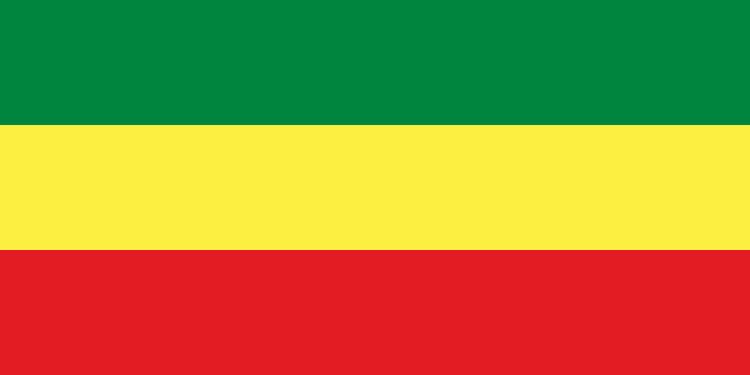Legislature Shengo Founded 1991 | Languages Amharic Area 1.127 million km² | |
 | ||
Government Marxist Provisional government | ||
The Transitional Government of Ethiopia (TGE) was established immediately after the Ethiopian People's Revolutionary Democratic Front (EPRDF) seized power from the Communist-led People's Democratic Republic of Ethiopia (PDRE) in 1991 and it continued until 1995, when it transitioned into the reconstituted Federal Democratic Republic of Ethiopia, which continues to this time. Meles Zenawi was the president and Tamrat Layne the prime minister of the Transitional Government.
In May 1991 the EPRDF drove the PDRE, led by Mengistu Haile Mariam, from power in Ethiopia. The EPRDF convened a National Conference from 1 July to 5 July and the Conference adopted a National Charter, which served as an interim constitution and established the Transitional Government. The Charter created the posts of president and prime minister, an 87-member Council of Representatives and a 17-member multi-ethnic Council of Ministers. The Council of Representatives was to elect the president, and oversee transition to a permanent government, which was expected to be created in 1994. A commission was to be created to draft a new constitution to come into effect by early 1994, two and a half years later.
The Charter recognized the right of self-determination for each of Ethiopia's ethnic "nations, nationalities and peoples", within a federation, and called for the creation of ethnically based regional councils to replace the provinces. One of the first tasks of the new Council of Representatives was to legislate for this. A Boundary Commission was set up in August 1991 to map the boundaries of the new regions. A map was drawn up on 18 October 1991 and Proclamation 7/1992 to establish the "National Self-Governments" of the regions (plural: kililoch; singular: kilil) was issued on 16 January 1992. The first elections for the fourteen councils were held on 21 June 1992. Following the elections, five of the regions were merged to form the Southern Nations, Nationalities, and Peoples' Region in 1992.
A Constituent Assembly was elected in 1994 to draw up a new constitution for Ethiopia. A general election was held in May–June 1995 and the new constitution took effect on 21 August 1995, ending the period of transition. The constitution adopted the name "Federal Democratic Republic of Ethiopia" for the country. It also formalised the democratic federal structure, replacing the provinces with the ethnically based regions, similar to how India formed its states soon after independence. Meles became prime minister of the Federal Democratic Republic and remained so until his death on August 20, 2012.
